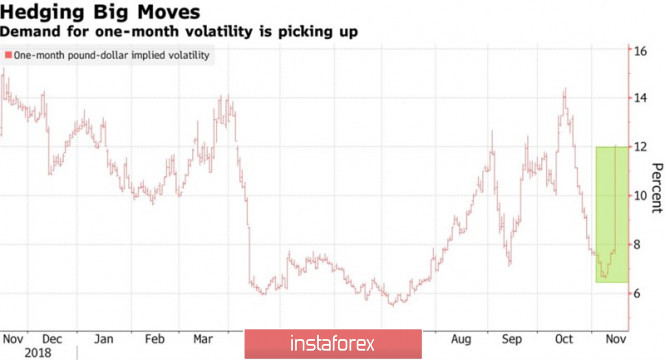The unwillingness of the Brexit Party to continue the struggle for seats in the renewed Parliament was the catalyst for the GBP/USD rally in the direction of the psychologically important mark of 1.3. In 2017, out of 43 seats now owned by Nigel Faraj's followers, 17 were held by the Conservatives, 11 by the Labour Party. The chances of the Tories' victory on December 12 are growing, and according to a poll by Bloomberg experts, their win will allow the pound to fly to $1.34. In such conditions, bulls will find it difficult not to fall into euphoria.
According to a Savanta ComRes poll, the Conservative Party has a 10-point lead over the opposition Labour. Studies by Ipsos Mori showed that 25% of respondents believe in the Tory victory, a third of respondents believe that Boris Johnson's supporters will lead the coalition in the new Parliament. The prime minister himself claims that Conservatives will end the uncertainty that is hampering Britain's economy. Indeed, weaker GDP growth than Reuters experts expected, job cuts, inflation slowdowns and disappointing retail sales statistics indicate that Great Britain is in pain from market uncertainties.
As a result, the 5% sterling rally for the last quarter runs counter to the principle of fundamental analysis "strong economy - strong currency". I would not be surprised if weak data on business activity in Britain lead to a continuation of the rally of the analyzed pair, because in this situation the chances of the Conservatives winning will increase.
Theoretically, the volatility, growing like a yeast, should also exert pressure on the pound. Due to the volatility of quotes, GBP has often been called the "Great British Peso" recently, comparing it with the currencies of developing countries. In fact, the current level of volatility suggests that after a month the sterling will either rise to $1.32, or fall to $1.25. The first option seems more plausible than the second.
Pound Volatility Dynamics

The pound is able to restore the bullish trend before December, however, to begin with, it needs to be tested by the publication of the minutes of the October FOMC meeting and political debate. In his speeches at a press conference following the Federal Reserve meeting and before the US Congress, Jerome Powell put a high barrier to changing the rate on federal funds. Its current level of 1.75% is considered by the central bank as comfortable, and reduction is possible only in two cases: with the escalation of the trade conflict in Washington and Beijing and with a significant and prolonged deterioration of US macroeconomic statistics. As a result, the derivatives market believes that before the fall of 2020, changes in the monetary policy of the Fed should not be expected. If the minutes of the October FOMC meeting confirms this, the US dollar may receive some preferences.
Technically, the GBP/USD update of the October highs will increase the risks of continuing the upward campaign to the area of 1,322-1,327, where the Bat and AB = CD targets are located, as well as the Pivot levels. While sterling is trading above $1.2725-1.275, the situation is under the control of the bulls.





















